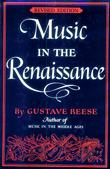Monteverdi, Claudio
Period: Renaissance
Born: Monday, May 15, 1567 in Cremona, Italy
Died: Sunday, November 29, 1643 in Venice, Italy
Nation of Origin: Italy
Major Works:
Madrigals:
Cruda Amarilli
Book VII: Ohimè dov'è il mio ben (romanesca)
Book VIII (Madrigals of War and Love):
Hor che'l ciel e la terra
Combattimento di Tancredi e Clorinda
Operas:
Orfeo
Vi ricorda o boschi ombrosi
Io non compro più speranza
In un fiorito prato
Arianna: Lament
Il ritorno d'Ulisse
L'Incoronazione di Poppea
Vespers
Mass: In illo tempore
Other Information:
Although a birthdate is not known, Monteverdi was baptized on May 15, 1567. He was among the first of the Ars Nova composers. The development of Monteverdi's style can be easily seen in his madrigals. The early ones (Books 1-4) are in the old Renaissance contrapuntal style of four equal voices, but after 1603 (Book 5) he began to write madrigals with an added basso continuo part and an exalted soprano part. Books 6-9 mix the basso continuo/homphonic/concertato style with the old contrapuntal style. In Book 7 he used a Romanesca and other ground bass forms like the chaconne and passacaglia. Book 8 contains his Madrigal of War and Love which displays a range of human passions in the stile concitato (agitated style of repeated 16th notes, tremelo, rapid scale passages, pizzicato, dotted rhythms, no bel canto but more like recitative in style).
His greatest contribution, however, is in the arena of the opera. In his first opera, Orpheus, he specified which instruments were to be used. That had never been done before in dramatic music but was perhaps necessary because he wrote his score for 40 instruments. Had he not specified which instruments were to be used he could not have had sufficient control over the sound of this large ensemble. He also created the virtuosic aria, a reflective, technically difficult vocal work designed to express a single affection. This aria, "Possente spirito" from the opera Orpheus, is one of many valuable works by Monteverdi. He wrote the work out twice, once without any ornamentation and once with suggested ornamentation. From this we have learned a lot about early Baroque ornamentation practices.
General Bibliography:
Reese, Gustave, Music in the Renaissance, W.W. Norton & Company; November 1959, ISBN: 0393095304
Sachs, Curt, The Rise of Music in the Ancient World , W. W. Norton & Company, 1943, ASIN: 0393097188
Slonimsky, Nicolas and Kuhn, Laura; Editors, Baker's Biographical Dictionary of Musicians, Gale Group, December 2000, ISBN: 0028655257
Sadie, Stanley and Tyrrell, John; Editors, The New Grove Dictionary of Music and Musicians, Groves Dictionaries, Inc., January 2004, ISBN: 0195170679
Rutherford-Johnson, Tim, Kennedy, Michael, and Kennedy, Joyce The Oxford Dictionary of Music, Oxford University Press, 6th Edition, 2012, ISBN: 0199578109
Links to essays at other sites:
Please note: Each link will open in a new window.
Biographical essay from Wikipedia
